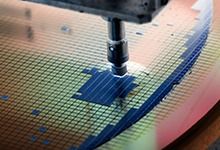NASA’s latest robotic geologist is starting to reveal the red planet’s pulse.


Thanks to the Mega Hurtz, you can move vehicles without lifting a finger! 😎 🚘.
A bionic revolution is brewing, as recent advancements in bioengineering have brought about scientific breakthroughs in rehabilitation for people with disabilities. The most cutting edge research is happening inside the human brain, where implanted technology allows people to communicate directly with computers, using their thoughts.
VICE’s Wilbert L. Cooper travels to Zurich to see the first-ever bionic Olympics and discovers a host of technologies that are expanding what it means to be human.
Check out VICE News for more: http://vicenews.com
Follow VICE News here:
Facebook: https://www.facebook.com/vicenews
Twitter: https://twitter.com/vicenews
Tumblr: http://vicenews.tumblr.com/
Instagram: http://instagram.com/vicenews
More videos from the VICE network: https://www.fb.com/vicevideo
#VICEonHBO

Great woman.
Her impeccable calculations had already helped plot the successful flight of Alan B. Shepard Jr., who became the first American in space when his Mercury spacecraft went aloft in 1961. • • Johnson’s work over 33 years propelled many of America’s breakthroughs in space exploration, including Neil Armstrong’s “giant leap for mankind” on the Moon. • • Rest in Peace Ma’am 😓.

With slide rules and pencils, Katherine Johnson’s brilliant mind helped launch our nation into space.
No longer a Hidden Figure, her bravery and commitment to excellence leaves an eternal legacy for us all: https://youtu.be/E8wBJ71zJ34

Atherosclerosis progresses is driven by chronic inflammation, the more sources of low-grade, smoldering inflammation, the faster atherosclerosis could develop. Gum disease is one such source of inflammation and is associated with a higher incidence of strokes.
Patients with gum disease were three times as likely to have a stroke involving blood vessels in the back of the brain, which controls vision, coordination and other vital bodily functions; and.

The sophistication of autonomous systems currently being developed across various domains and industries has markedly increased in recent years, due in large part to advances in computing, modeling, sensing, and other technologies. While much of the technology that has enabled this technical revolution has moved forward expeditiously, formal safety assurances for these systems still lag behind. This is largely due to their reliance on data-driven machine learning (ML) technologies, which are inherently unpredictable and lack the necessary mathematical framework to provide guarantees on correctness. Without assurances, trust in any learning enabled cyber physical system’s (LE-CPS’s) safety and correct operation is limited, impeding their broad deployment and adoption for critical defense situations or capabilities.
To address this challenge, DARPA’s Assured Autonomy program is working to provide continual assurance of an LE-CPS’s safety and functional correctness, both at the time of its design and while operational. The program is developing mathematically verifiable approaches and tools that can be applied to different types and applications of data-driven ML algorithms in these systems to enhance their autonomy and assure they are achieving an acceptable level of safety. To help ground the research objectives, the program is prioritizing challenge problems in the defense-relevant autonomous vehicle space, specifically related to air, land, and underwater platforms.
The first phase of the Assured Autonomy program recently concluded. To assess the technologies in development, research teams integrated them into a small number of autonomous demonstration systems and evaluated each against various defense-relevant challenges. After 18 months of research and development on the assurance methods, tools, and learning enabled capabilities (LECs), the program is exhibiting early signs of progress.

Today’s defense electronics systems rely on radio frequency (RF) mixed-mode electronics – those that integrate RF, analog, and digital circuits onto a single chip – to interface RF signals with digital processors. This technology supports critical communications, radar, and electronic warfare (EW) capabilities, as well as being widely used to support commercial telecommunications. The Department of Defense (DoD) has capability demands that far exceed the requirements of the commercial world in terms of speed, fidelity, capacity, and precision. Current commercial RF mixed-mode systems on a chip (SoCs) are implemented on digital complementary metal oxide semiconductor (CMOS) platforms, a technology that has been used for decades to construct integrated circuits, highly integrated transceivers, microprocessors, and beyond. Despite continued advancement and scaling along the trajectory of Moore’s Law for high integration density, these CMOS platforms are unable to support operations at higher frequencies with larger signal bandwidths and higher resolutions, essentially limiting their use in next-generation mixed-mode interfaces needed for emerging defense RF applications.
To advance RF mixed-mode interfaces beyond current limitations, DARPA established the Technologies for Mixed-mode Ultra Scaled Integrated Circuits (T-MUSIC) program. T-MUSIC was first announced in January 2019 as a part of the second phase of DARPA’s Electronics Resurgence Initiative (ERI). One area of research under ERI Phase II focuses on the integration of photonics and RF components directly into advanced circuits and semiconductor manufacturing processes, enabling unique and differentiated domestic manufacturing capabilities. As such, T-MUSIC will explore the integration of mixed-mode electronics into advanced onshore semiconductor manufacturing processes. The goal is to develop highly integrated RF electronics with an unprecedented combination of wide spectral coverage, high resolution, large dynamic range, and high information processing bandwidth.

Sensors are usually thought of in terms of physical devices that receive and respond to electromagnetic signals – from everyday sensors in our smartphones and connected home appliances to more advanced sensors in buildings, cars, airplanes and spacecraft. No physical sensor or aggregation of electronic sensors, however, can continuously and globally detect disturbances that take place on or above the earth’s surface. But the physical atmosphere itself may offer such a sensing capability, if it can be understood and tapped into.
To that end, DARPA recently announced its Atmosphere as a Sensor (AtmoSense) program, whose goal is to understand the fundamentals of energy propagation from the ground to the ionosphere to determine if the atmosphere can be used as a sensor. A Proposers Day is scheduled for February 14, 2020, in Arlington, Virginia.
It’s well known that energy propagates from the Earth’s surface to the ionosphere, but the specifics of how that happens is not currently known enough to use the atmosphere as a sensor. Scientific literature has clearly documented that events like thunderstorms, tornadoes, volcanos, and tsunamis make big “three-dimensional wakes” that propagate to the upper reaches of the ionosphere and leave a mark there. Since that energy traverses several other layers of atmosphere – the troposphere, stratosphere, and mesosphere – on its way up to the ionosphere, the idea is to try and identify the disturbances the “wake” is making along its way to see if researchers can capture information to indicate what type of event caused it.